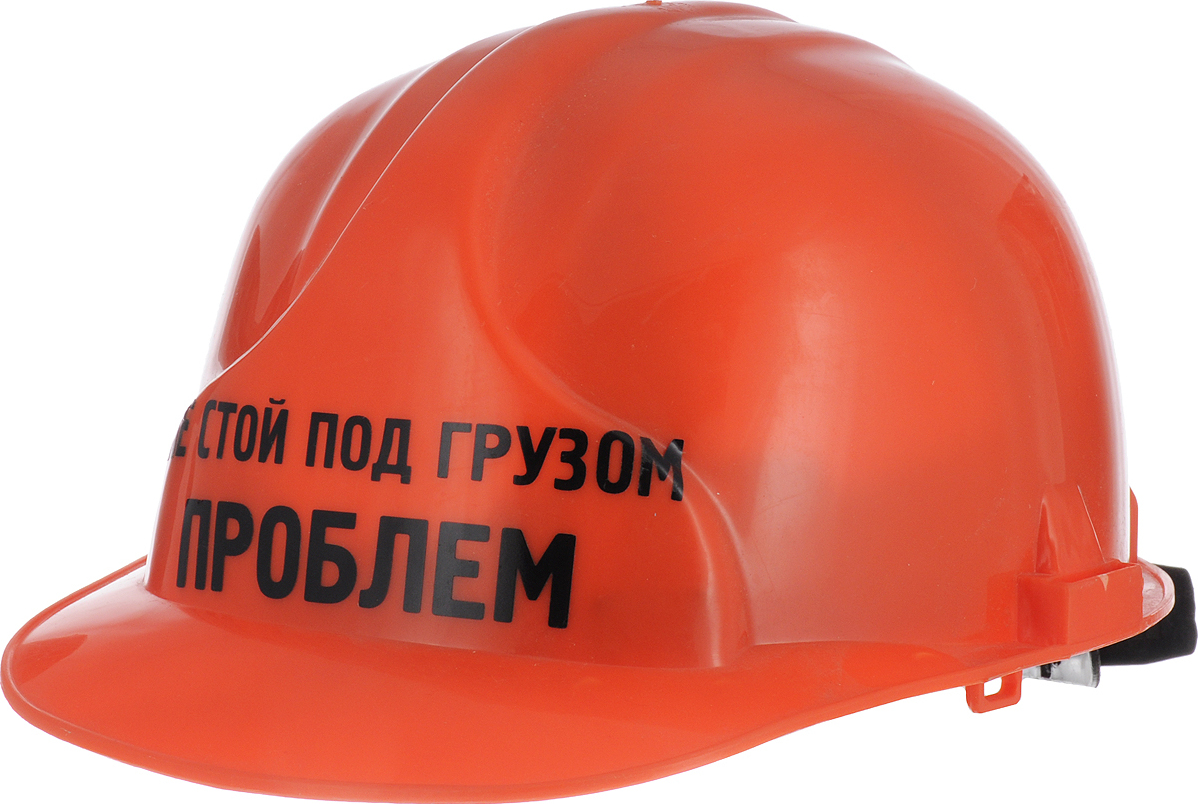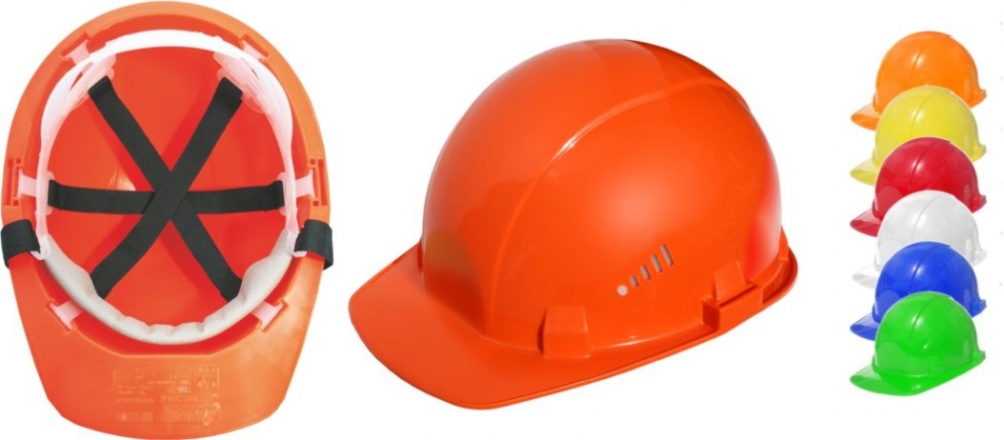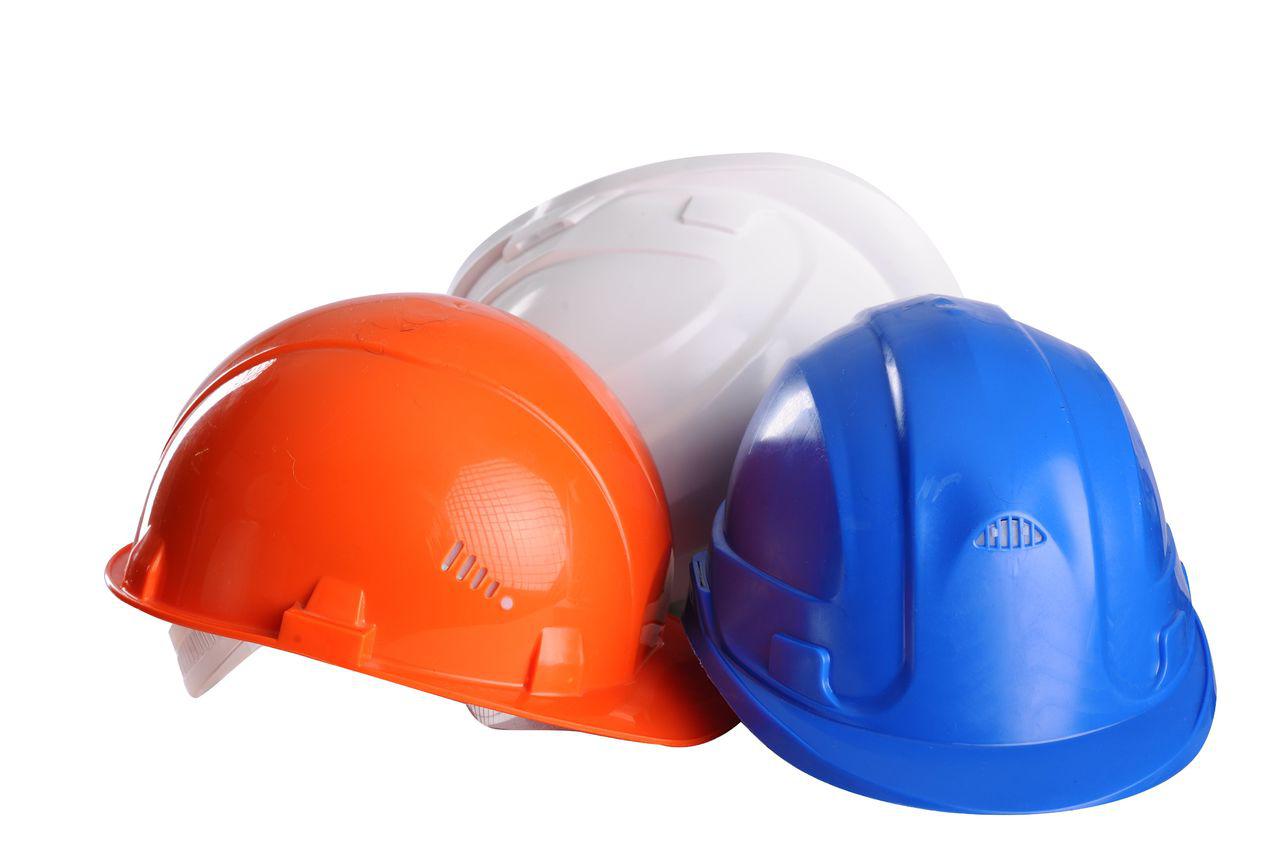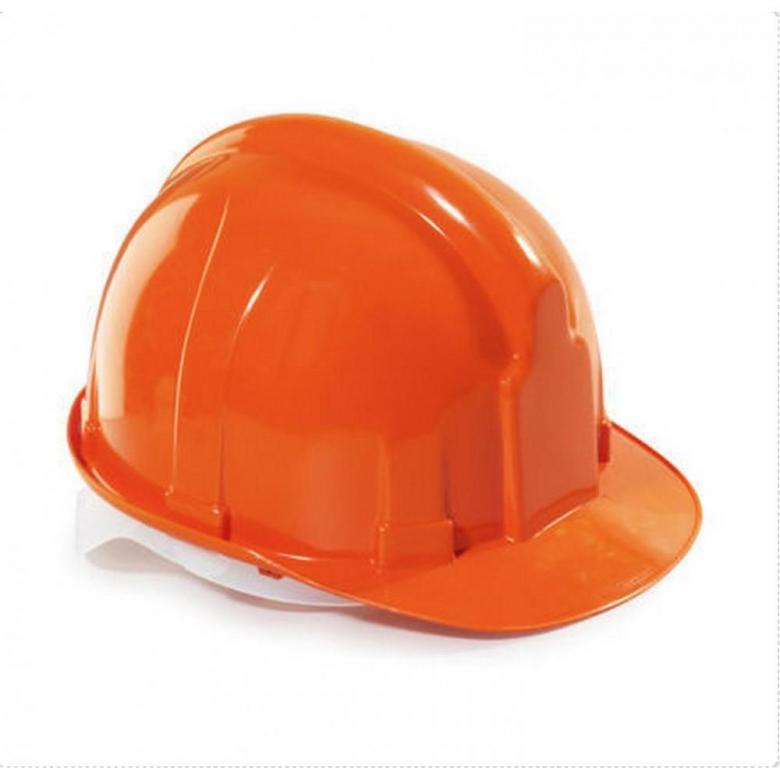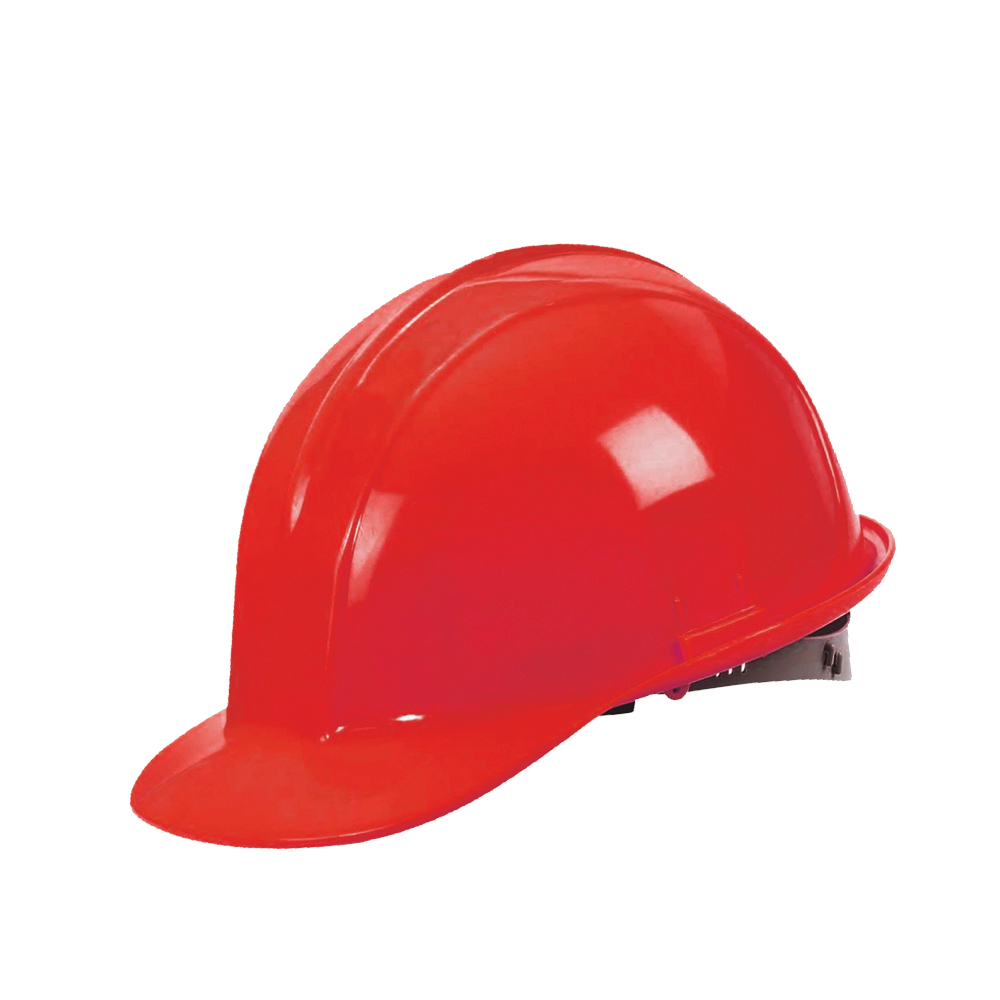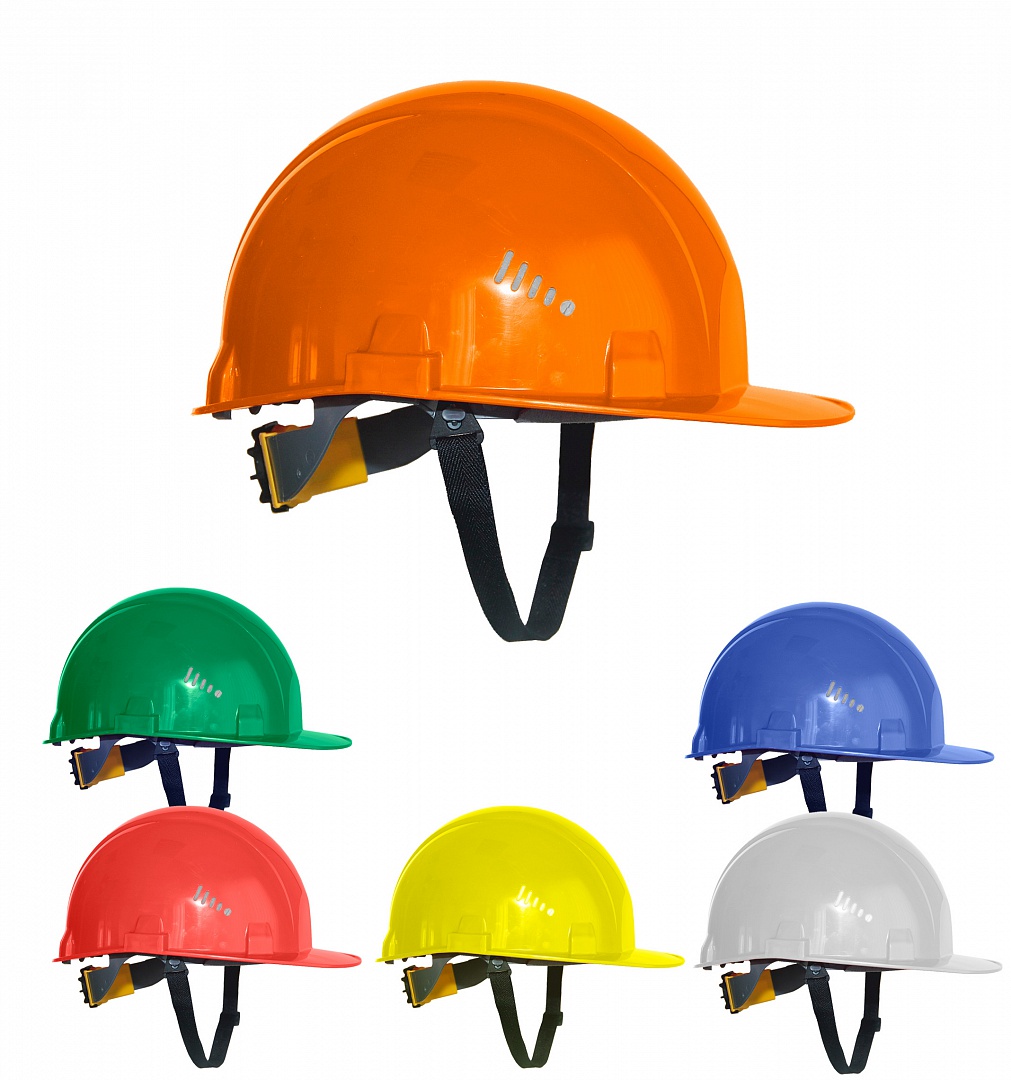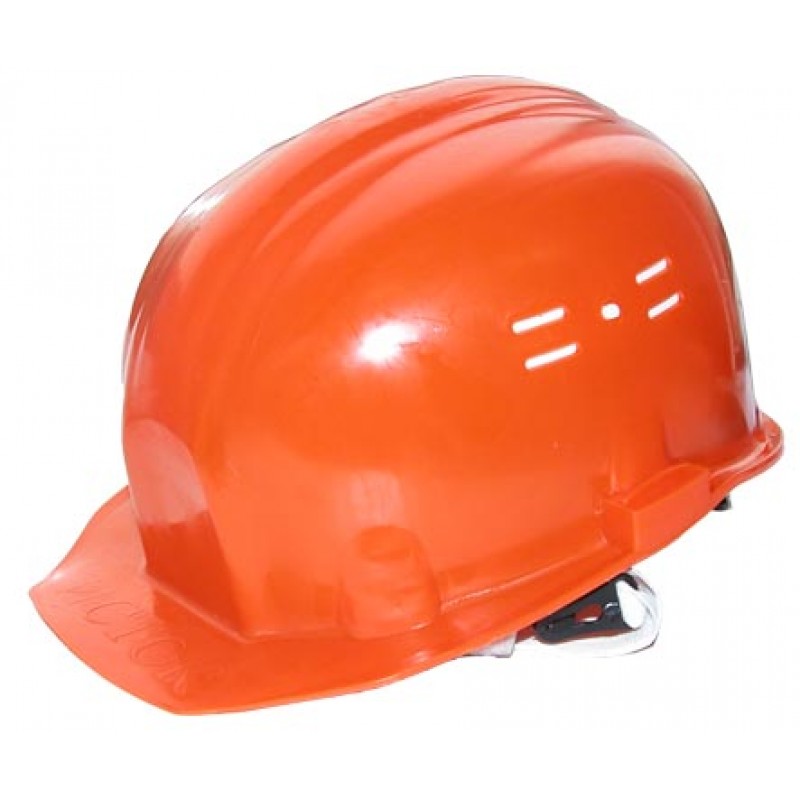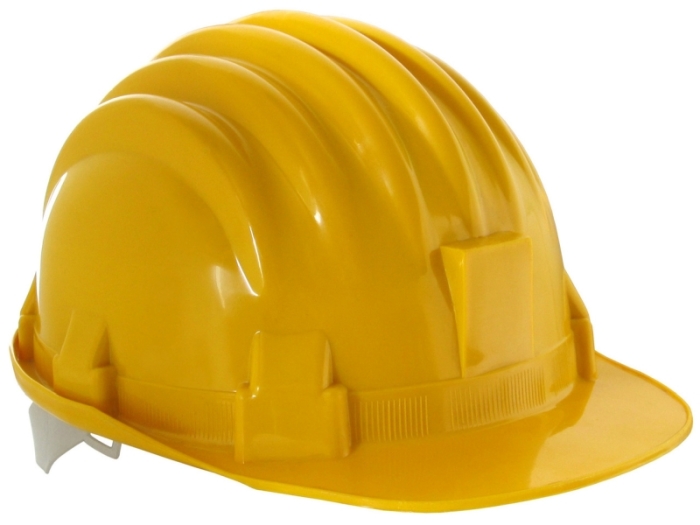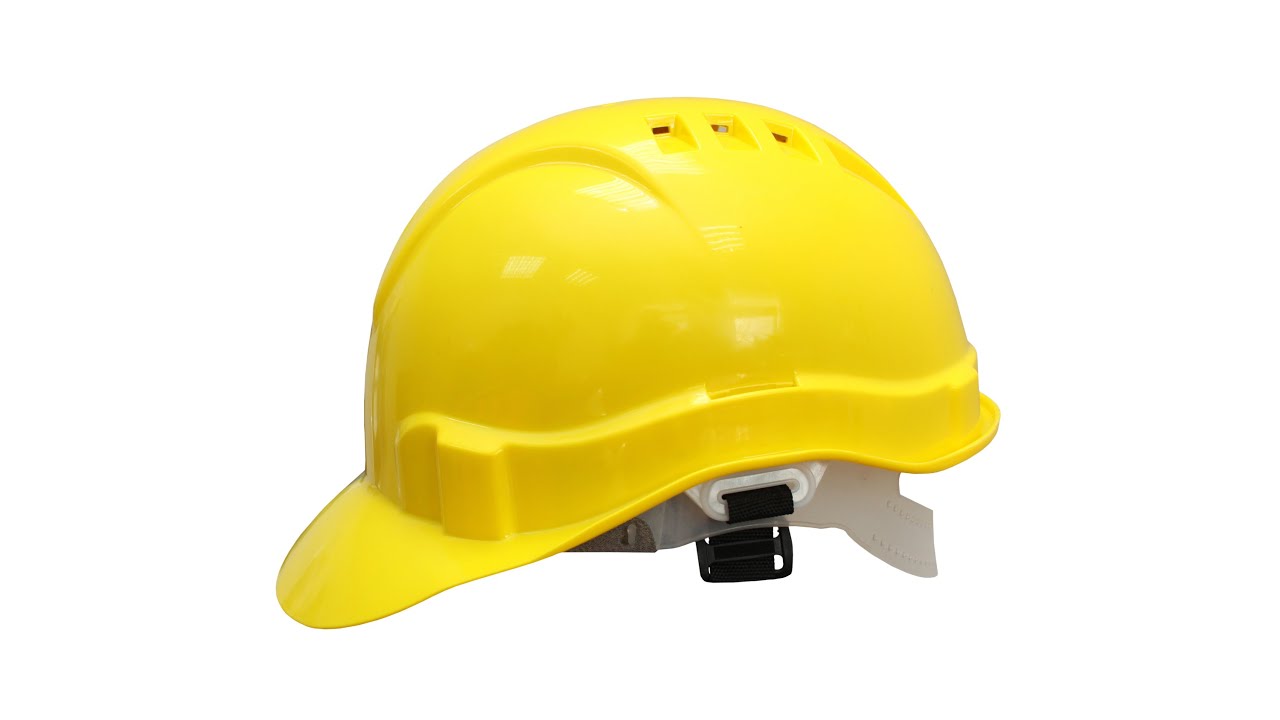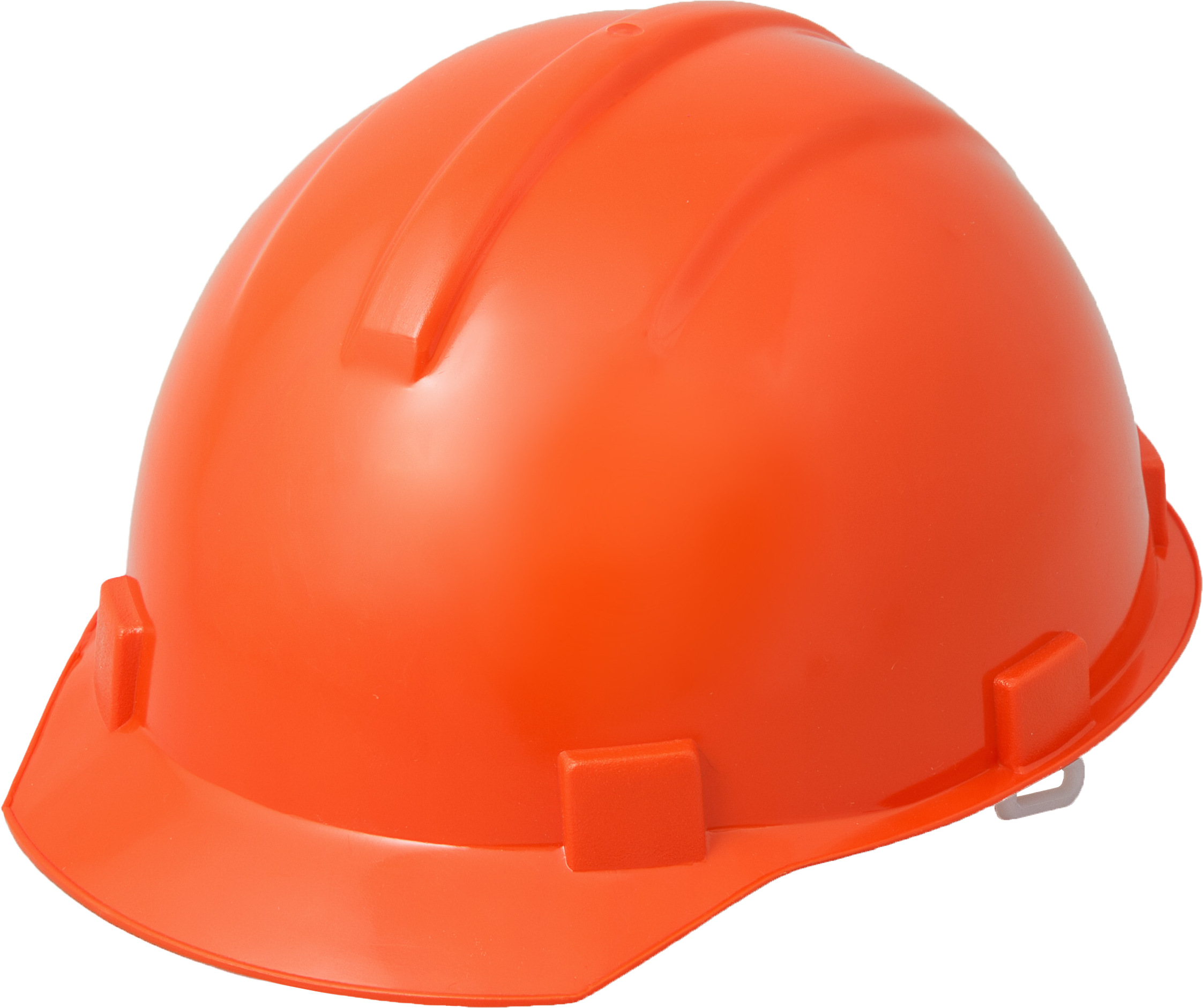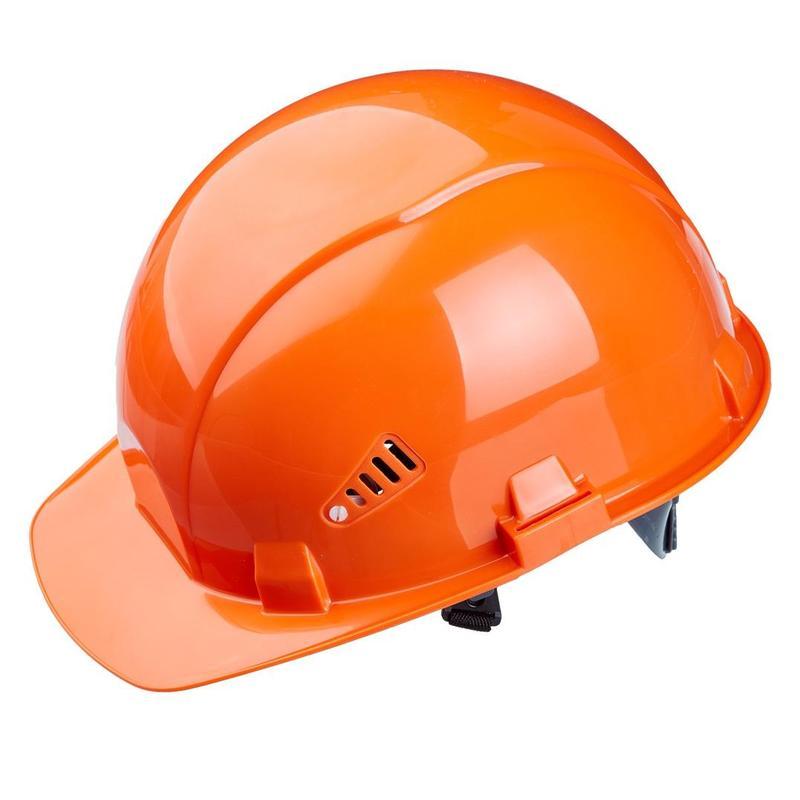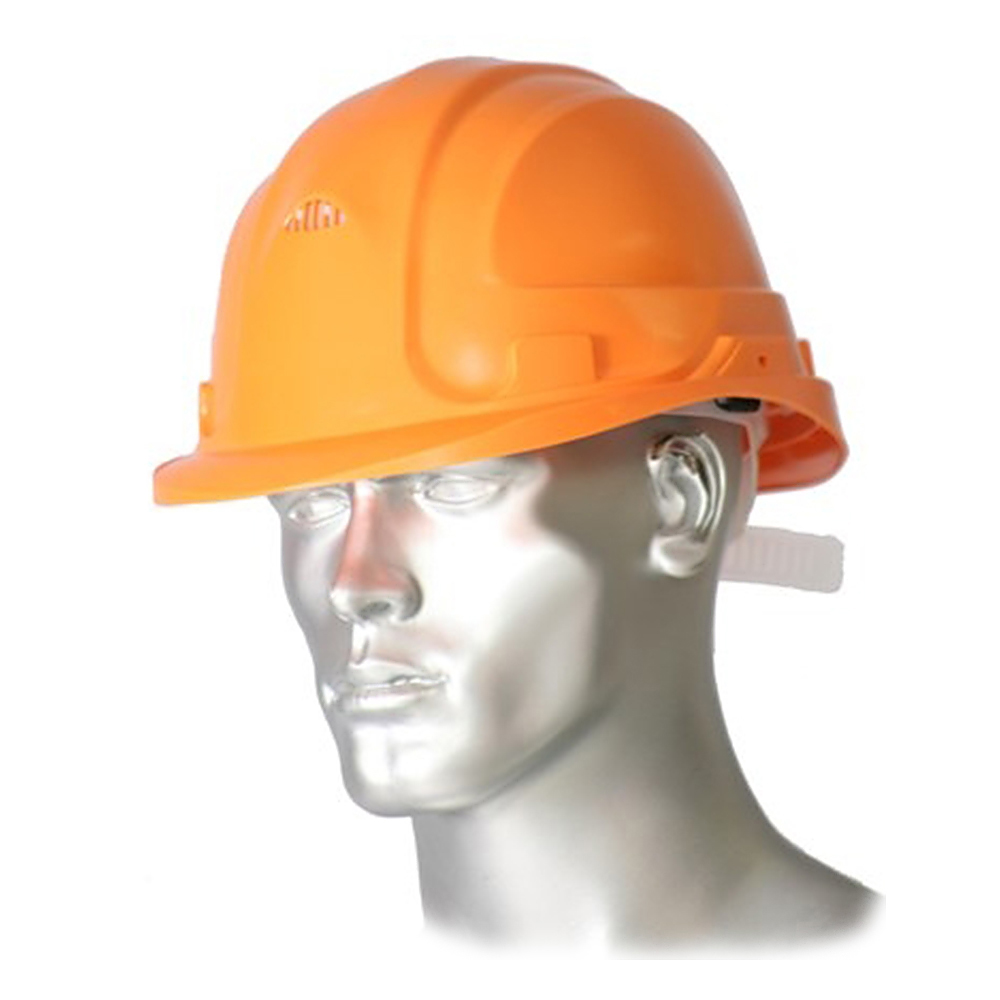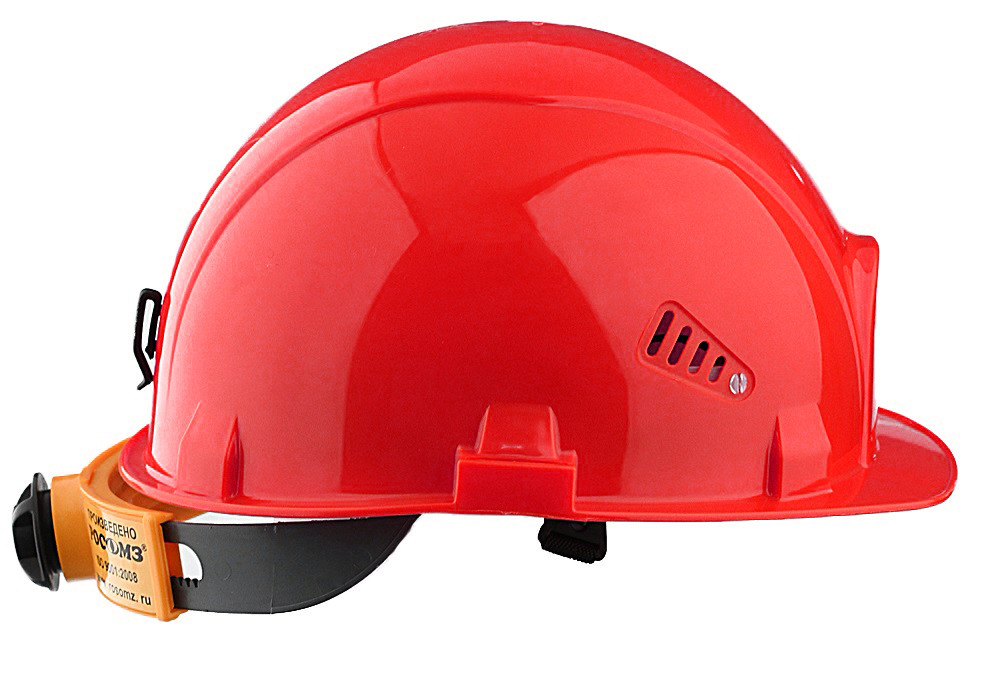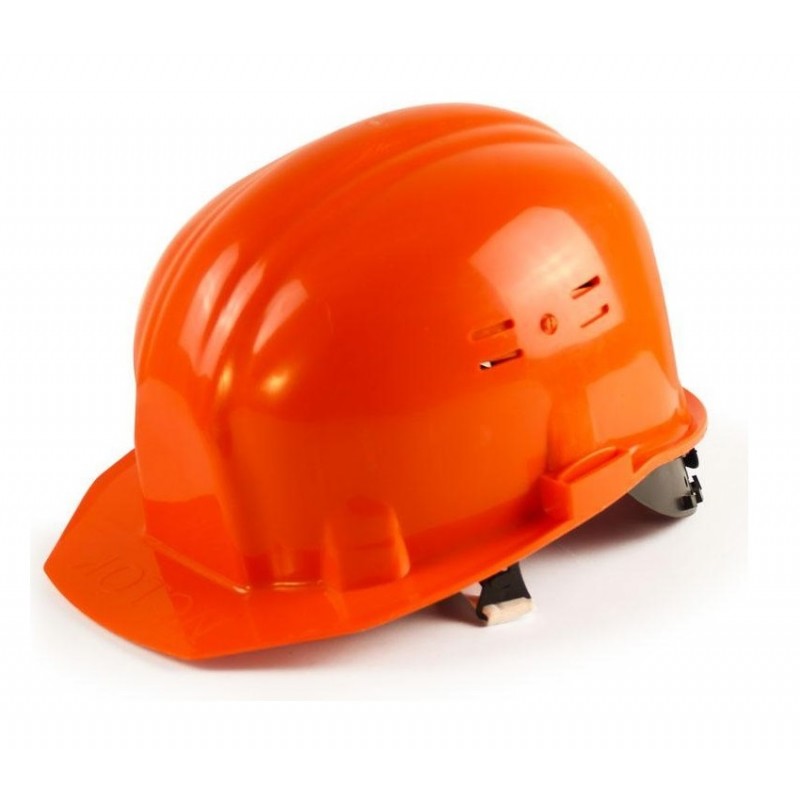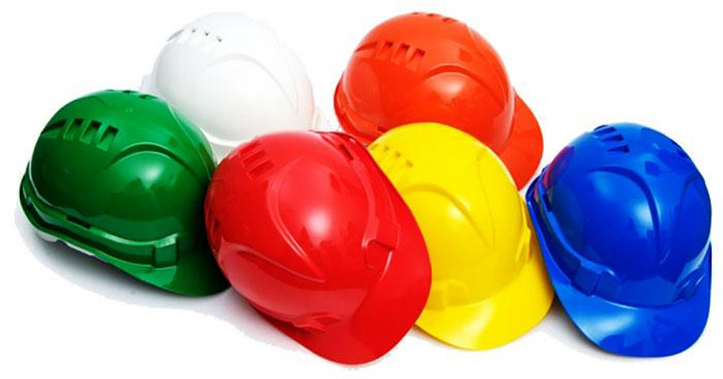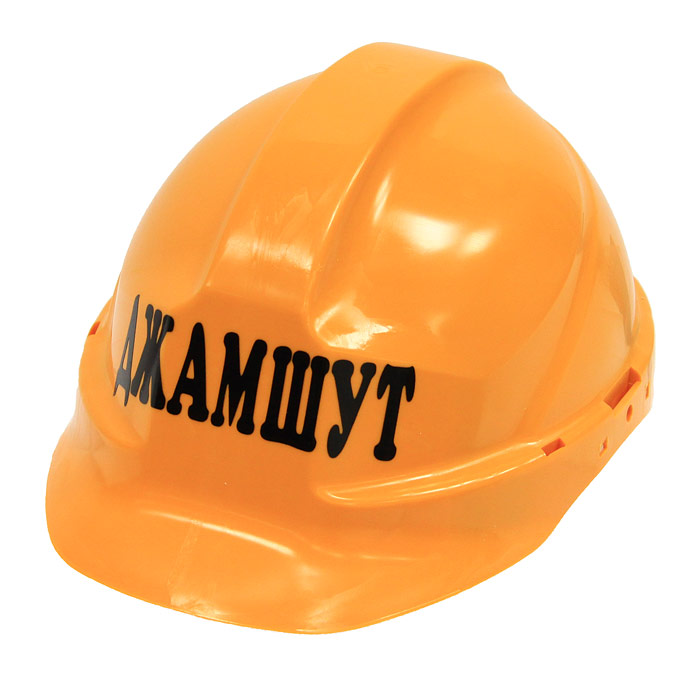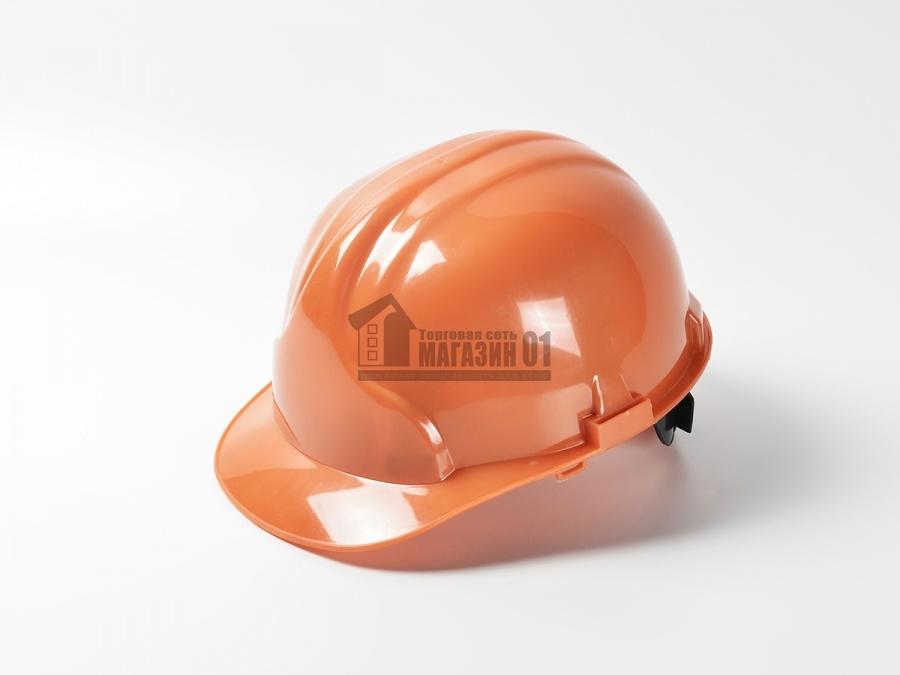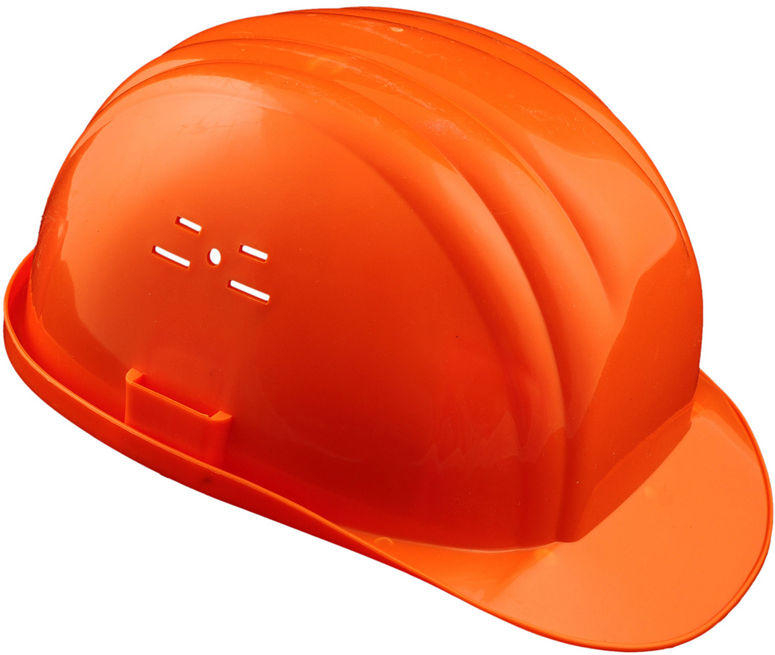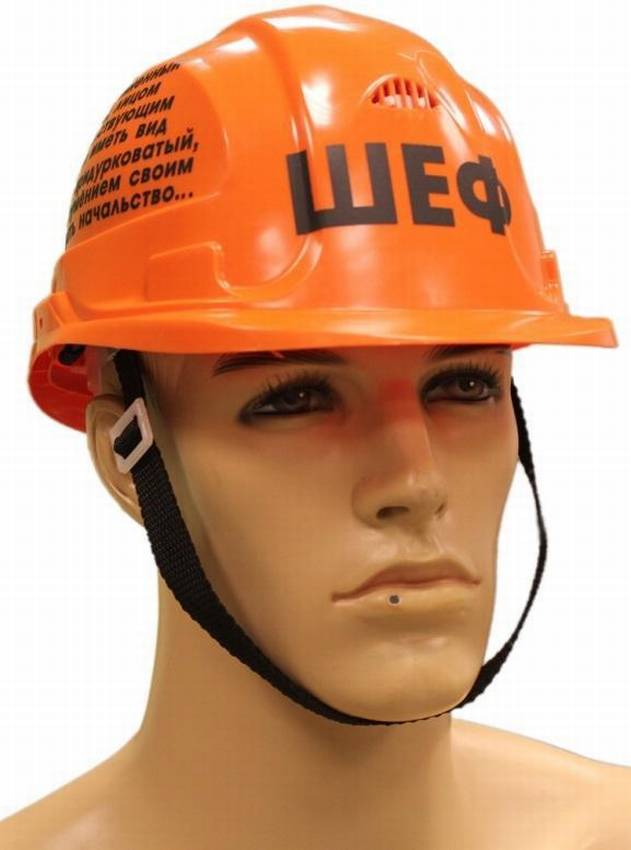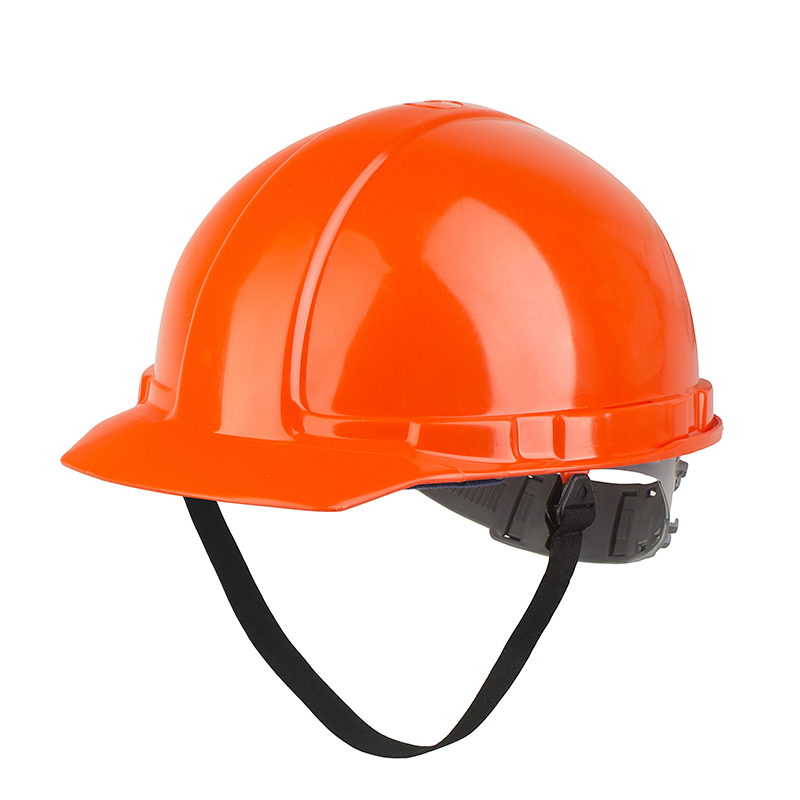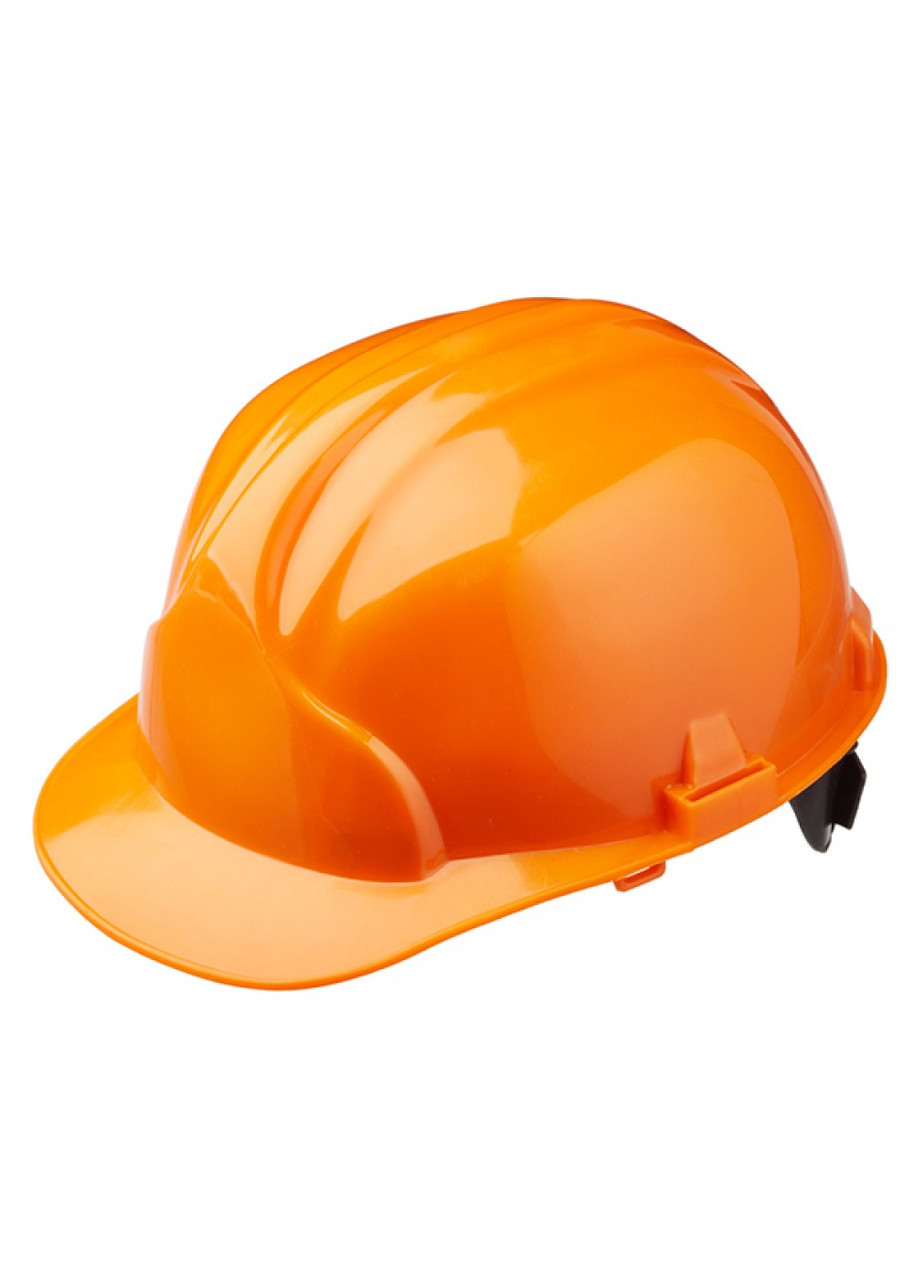Which one to choose?
It doesn't make sense to focus on design
This is not a hat! It is much more important to pay attention to good protective qualities. And not "in general", but taking into account the threats that appear in a specific production
Even the simplest helmet must:
-
block the blows of foreign objects, their penetration to the head;
-
absorb the kinetic energy of moving bodies;
-
tolerate moisture.
An additional plus will be, of course, fire resistance. Also important:
-
resistance to electric current;
-
heat resistance;
-
level of protection;
-
the amount of protected space.
In winter, it is important to have a heater. In the heat, the increased work of ventilation is more relevant
For miners and miners, for tunneling, the presence of a mount under the lantern is mandatory. When working in public utilities, it is desirable. But builders can usually do without such an attribute.
The most durable polycarbonate is often chosen, which is especially reliable. Helmets made of it retain their protective properties for a long time. However, the problem is that the load on impact is not absorbed, but distributed, so there is a high risk of injury to the cervical vertebrae. Soft Styrofoam will prevent problems when hitting slow objects or falling, but is useless when hit by a falling object.
Meaning of other colors
An orange construction helmet is a characteristic feature of ordinary employees and service, support personnel. However, such a headgear is sometimes worn not only by construction workers, but also by surveyors who measure something at the facility. A yellow helmet is a 100% sign that its owner is only following the orders of the management.


Now, in the absence of standards, each company has the right to establish its own procedures even for individual structural divisions and branches. That is why today the color of the helmet does not always allow a stranger to confidently distinguish the difference in positions. But the construction workers themselves can easily recognize other people by the color of their headgear.
This is especially important:
-
over long distances;
-
with a significant difference in height;
-
at night and in bad weather.


Typically, color standards are not just announced by order of the company, but approved in its special standard developed by the industrial safety department. The black helmet is usually the preserve of the locksmith. Blue hats are predominantly worn by plumbers. But if an electrician comes to a construction site, he will most often be given green PPE. The Cherepovets Coke Plant requires ordinary employees to wear orange protective gear.
But if strangers come there, they will be given a yellow helmet. For comparison: at Norilsk Nickel employees with less than 36 months' experience are required to wear red hats. This significantly increases the visibility. When a high-rise crane is working on a construction site, the operator uses a blue guard.


Here are some more facts:
-
yellow and orange are interchangeable;
-
a white helmet can be worn by an environmental protection officer, an employee of a construction or technical supervision;
-
green helmets are often worn by security guards;
-
the electrician installing the wiring for the immediate delivery of the object can be in a yellow or "reddish" helmet;
-
red helmets of non-standard design (without visors) - a common feature of the appearance of high-altitude and industrial climbers;
-
customers and their representatives are given a white helmet;
-
architects often wear a black headdress, but their very appearance is rare.


An overview of the construction helmet "Europe" in the video below.
Regulations and state standards for the color of helmets
The standard in which the colors of helmets at a construction site are officially regulated is GOST 12.4.087-84. This document indicates that the hulls of these construction PPE can be 4 colors: white, red, yellow and orange. But according to this GOST, protective hats are no longer produced.
The invalidated standard was replaced by GOST 12.4.207-99, and then GOST R EH 397 / A1-2010. But neither the first nor the second says anything about the color of the helmets. And this suggests that it is not required to strictly monitor his compliance with the profession. This state of affairs has opened up great opportunities for fans of extraordinary colors.
Manufacturers can now make products in any shade, but for many it is still important what color the helmets are. The old color coding, which has been in place since Soviet times, is retained in some enterprises.
But none of the regulations prohibits, and marketers strongly advise doing this for advertising purposes.
Best Answers
Zheka Dalnoboy EF-Plast:
It would seem, what's the difference in what color the construction helmet? Whichever color you like best, wear that one. However, this is not entirely true, and almost every color of this personal protective equipment has a certain meaning.
Not everyone knows that construction helmets should be of different colors, depending on the status of its wearer (owner). In accordance with GOST 12.4.087-84, their cases are available in different colors, including:
1.white - for the leadership of organizations and enterprises, heads of sections and workshops, public inspectors for labor protection, employees of the safety service; 2. red - for foremen, foremen, engineers, technical workers, chief mechanics and chief power engineers; 3. yellow and orange - for workers and junior maintenance personnel. 4. brown - miners. 5. blue - mine rescuers.
Along with this, it is often customary to place an emblem or other sign on a protective helmet that speaks of the industry or professional affiliation of the employee.
With this kind of coding of outsiders and high-ranking bosses, who often do not always know where to walk safely and where not, you can quickly notice and warn against accidents and head injuries. At the same time, a slight difference in the color of the supervisor's construction helmet allows you to find it faster if necessary, even from a very high height.
Also, in addition to white, yellow, orange and red construction helmets, blue, green and others are common.
Irina Rozhok:
because he is a foreman, and they are usually "strict"
Ivan K .:
To distinguish, but the big bosses have yellow
Tolik Panarin:
The bosses and the foreman should be different from the workers. They lead the process and, if anything happens, they are contacted by the rest of the workers or people who came to the construction site.
Alexander Golub:
It is better to aim at white from the roof with a brick.
Pskov Vamp:
yellow helmet - when you see a person at a construction site wearing a yellow helmet of a builder, of course it will be an auxiliary worker carrying out commands from the authorities; white helmet - if you are in a construction college and graduated from it with a degree in engineering, at a construction site you will wear a white helmet. In addition to engineers, such a helmet is also worn by construction managers, an inspector of construction supervision, but among other things, environmental protection engineers a blue helmet - it is worn by people operating high-rise cranes, as well as electricians - working at the construction stage; a green helmet - it is worn by a person who is engaged in occupational safety ; black helmet - when you see a person in this helmet, of course it will be an architect; a red helmet is a student starting his way in construction, or just guests who come to a construction site; an orange helmet - a person wearing an orange helmet, this is a person who takes measurements, that is, a surveyor.
Shelf life of a construction helmet
Currently SNiP 12-03-2001 “Labor safety in construction. Part 1. General requirements ". It obliges the use of helmets, but does not impose any requirements on the standards of their manufacture, leaving the question of choosing the manufacturer at the discretion of buyers.
It is enough that the product has a certificate of conformity, and the service life does not exceed that specified by the manufacturer.
Thus, a person purchasing PPE for a construction industry enterprise faces the choice of GOST. He can use products made in accordance with GOST 12. 4. 087-84, the service life of which is 2 years. These are construction helmets, previously the legislation established that only them were used on construction sites. Now there is no such requirement, it is enough for the helmet to be protective and to be produced in accordance with GOST EN 397-2012.
The expiration date is not specified in this document. Also on the market there are many products made according to the abolished GOST R 12. 4. 207-99, according to which they also have no expiration date.
It is important to take into account the life of PPE in production. This time depends on the conditions at the enterprise, including the climatic zone.
Specific time frames are given in GOST 12. 4. 087-84, GOST 12. 4. 128-83 and Order of the Ministry of Labor of Russia dated March 28, 2014 No. 155n.
At the same time, the Model Norms for the Issuance of PPE (Interindustry Rules for Providing Workers with Special Clothing, Shoes and Other Personal Protective Equipment, approved by Order of the Ministry of Health and Social Development of Russia dated June 1, 2009 No. 290n) states that the helmet is issued "until wear and tear."
Off-white construction helmet
For example, a brigadier's helmet is not very clean. Scratches, abrasions and dirt are visible on it. Although he does not work with his hands on a par with ordinary workers, he is still in not the best conditions most of the time.
All this leaves an imprint on the condition of the construction helmet. After a couple of months, it loses its gloss and gloss, and after a while it becomes completely filthy and worn out. Pride and labor discipline do not allow parting with her, because she is some kind of symbol of power and social status.
The dirty white helmet has the right to determine the earnings of each individual member of the brigade, therefore they do not like it too much. In addition, from under it, various threats, manipulations and other not very pleasant suggestions are often heard.
Answers from experts
Valera Chupriy:
Those walk in red helmets to whom they were given such.
Vladimir Butusov:
This is how it should be according to the dress code.
Marousel:
Those who follow the safety rules.
Alina:
builders walk in them. a helmet to protect the head. absolutely any colors, as they say "whatever you want, for your money."
The same one:
Near me, at a construction site, there are only southerners in helmets…. others and no: - ((
Nikolay Belogurov:
those in helmets are walking - who knows what, if a brick falls on their head, they will only smile ———- CONSTANTLY
Alexey Polyakov:
Our superintendents wear red so that you can see it from afar!
wyrik:
white helmet-chief. other colors for workers.
Oleg Zhestov:
orange for the worker, red foreman, white head of the site and above. I am at a loss with yellow, but there must be a student, an intern.
Michael:
.podarku-vsem /index.php?productID=399
BOSS:
In red, orange, hard workers. In white-engineering and technical workers (foreman, foreman, head of the site and guests of the construction site).
Sergey Nikulin:
The superintendents run to the whites and the Ts. U. give.
Avanez Kirpikin:
I have it chrome. Made to order. I do not go to the construction site so often, on average once a month.
Pavel Smirnov:
Each industry has its own “helmet color hierarchy”. For example, at a construction site: red-foreman, orange-worker, yellow-tech. staff, white-engineer, blue-ch. engineer. Their colors in construction companies are regulated by GOST 12.4.087-84 of 1984, but their own internal hierarchy can also be established, no one forbids.
MS:
At a real construction site. Orange / yellow - workers. White - engineers.
Requirements
The current GOST for protective headgear was approved in 1997. It provides, in particular, the prohibition of the use of any materials that, in contact with the skin, cause irritation or other harm to health. The presence of any sharp and cutting edges, protrusions and other parts that could cause harm is prohibited. If the helmet contains elements that can be removed or rearranged, this must be done manually, without the use of tools. At the same time, the adjustment of all parts should be very easy, but it should not be allowed to change without control from the user.
Protective headgear for work at height and in those places where heavy objects can fall from above deserve special attention. When testing such helmets, a test for dropping them from a height is mandatory (with the measurement of the energy that fell on individual sections). The test results are entered into the certificate of conformity in accordance with the established procedure.

Certification in accordance with TR CU is carried out in three main categories:
-
general protective headgear;
-
special protective equipment;
-
head protection devices for underground work.
Universal helmets can be used in a wide variety of areas, including construction and road works. They are worn by employees of agricultural organizations, laboratories and repair departments. Such protective devices must protect the head from falling objects. Equipping with a canopy to reduce exposure to bright sunlight is also common. If necessary, these models of helmets are equipped with a translucent block that protects the face from sparks and dust particles.
Special hats sometimes have a very sophisticated design. It is determined by the type of work that is planned to be performed. Helmets for work in undergrounds are equipped with a support system for the flashlight and a fastener for its cable. Helmets are lighter. But they are intended only to protect against direct impacts on objects - if a heavy load falls, the consequences are inevitable.
TR CU specifies the following requirements for helmets for certification:
-
with a total impact energy of 50 J, the force transmitted inward should be a maximum of 5 kN;
-
when a sharp object with an energy of 30 J or more falls, touching the surface of the head should be excluded;
-
full ventilation of the internal volume is required without additional devices;
-
compulsory protection against injury by alternating current with a frequency of 50 Hz and a voltage of 440 V;
-
mandatory protection against thermal effects of an electric arc, resistance to melting and fire;
-
preservation of all basic qualities in the temperature range declared by the manufacturer;
-
the presence of markings that are difficult or impossible to remove, indicating the operating temperature range and other characteristics;
-
a special version of the mount that will not allow the helmet to fall or shift;
-
lateral and permanent deformations no more than 4 and 1.5 cm, respectively.
Species overview
By type of use
It is customary to highlight the following options for helmets:
-
winter heat-resistant;
-
universal construction;
-
miners (for underground work);
-
firefighters (with increased fire and electrical resistance);
-
heat-resistant structures;
-
acid and alkali resistant models;
-
intended for other professions.
By color
The color of the safety helmet can vary greatly. And professionals have long come to the conclusion that such color coding allows for increased safety. In addition, it will facilitate the identification of personnel at long distances and in low visibility. The state standard for the coloring of protective headgear, approved in 1987, has long been canceled. The following normative documents say nothing about specific colors.
And yet for convenience, and partly for reasons of tradition, builders and others adhere to established color schemes. White helmets are usually worn by the management of organizations and their structural units, as well as labor protection inspectors. Recently, they have also become an attribute of security services (guards, watchmen, watchmen). And some construction organizations practice white helmets in the outfit of engineering personnel.
The red headdress is worn by foremen, engineering and technical personnel of industrial enterprises. In the industrial sphere, they are also used by chief mechanics and chief power engineers.Yellow and orange helmets can be used by ordinary and auxiliary personnel at various sites. However, there is another approach according to which the color of protective headgear is distributed as follows:
-
orange - surveyors;
-
red - beginners and visitors;
-
yellow - ordinary staff (but not trainees);
-
green - for electricians and electricians;
-
black - locksmiths;
-
blue - plumber service specialists;
-
brown - miners;
-
blue - crane operator;
-
white or red - fire departments.
By type of additional equipment
Some professions strongly require the use of a special headgear with face protection. Helmets with a screen or a shield made of transparent materials provide reliable protection against splashing metal, drops of corrosive liquid, flying chips, fragments and dust. A special part is used to attach such an element. There are also shockproof shields that can be made of transparent materials. Some models can protect against high temperatures.
Some of the helmets are equipped with a visor that maximizes the safety of the face in general and the eyes in particular. Such designs are useful for the logging, construction and installation industries. In many industries, helmets with headphones are actively used. Such an addition allows both to escape from incessant loud sounds and to organize constant communication between employees.
Communication headphones for helmets:
-
equipped with built-in electronics that suppress impulse noise;
-
suitable for work in an explosive environment;
-
can transmit signals via Bluetooth;
-
are calculated to contain sounds of different loudness, different frequencies.
Separate helmets are supplied with (or used in conjunction with) goggles. When the work requiring the use of glasses is finished, they can be returned under the helmet in one motion. Pulling back this protective device is no more difficult.
Any helmet is equipped with a chin strap, without which it cannot be properly held on the head. The width of the strap cannot be less than 1 cm, its attachment can be located on the body of the headgear or on the strap.
Helmets with a comforter, characterized by increased heat resistance, are quite common. It compensates for the danger of increased temperature and heat radiation. Such equipment is used most often by welders and metallurgists. There are also helmets with comforters:
-
for machine builders;
-
builders;
-
miners;
-
oil producers;
-
oil refiners;
-
electricians.
In appearance
Brims and canopies significantly increase light protection. Also holders for flashlights are additionally used. It is worth considering the following options:
-
equipping with a removable cape;
-
adding a warm liner to protect against hypothermia;
-
made from a combination of glass with textolite and plastic.
Construction site helmets colors
According to the above-mentioned GOST 12.4.087-84, representatives of different categories of workers have the following colors of construction helmets:
-
White
- for the management of a company or enterprise and its sections, for health inspectors and representatives of the security service. -
Red
- put on by foremen, engineers, ch. mechanics and ch. energy. -
Yellow and orange
- are intended for ordinary workers and service staff.
But on some construction sites, in addition to the management, engineers are also equipped with white protective caps. And other color coding is used as follows:
- Orange - for surveyors involved in construction measurements.
- Yellow ones are for workers who follow orders from their superiors.
- Red - for apprentices of builders and visitors to the facility under construction.
And what is the purpose of the designation of different specialists with multi-colored helmets? It is most logical to assume that by the color of the headdress on construction it is easy to find a boss or a partner, even from a great height, from where the faces are completely invisible.

The color values of the helmet of a specialist of the same category may not coincide at different construction sites.
But no matter what color hats the employees of a construction company or enterprise have, it is always possible. Emblems or other signs on them better than colors tell about the industry and the professional affiliation of a member of the work collective.
Impostors in white helmets
Nobody forbids going to the store and buying a white construction helmet. Moreover, it is not expensive. In my practice, there was a case when a guy came to a construction site with his white helmet. It was slightly different in shape from the standard one, but it was still white.
At first it was interesting to observe the bewilderment on the faces of the construction management when they tried to classify it. Mine? It seems not! A hard worker? Why in a white helmet?
Six months later, he became a link, thereby confirming his right to wear it. And after some time she was lost. He did not dare to buy a construction helmet a second time.
CONSTRUCTION CONSTRUCTION HELMETS
TECHNICAL CONDITIONS
Official edition
IPK PUBLISHING STANDARDS Moscow
INTERSTATE STANDARD
Occupational safety standards system CONSTRUCTION CONSTRUCTION HELMETS
GOST
12.4.087-84
Technical conditions
Occupational safety standards system. Building. Building helmets. Specifications
MKC 13.340.20
Instead of
GOST 12.4.087-80
By the decree of the State Committee of the USSR for Construction Affairs dated May 10, 1984 No. 73, the date of introduction was established 01.01.85
This standard applies to plastic helmets designed to protect the head of workers from mechanical damage, water and electric current during construction, construction and repair work.
1. BASIC PARAMETERS AND DIMENSIONS
1.1. Helmets should be made in two sizes with steps for adjusting the length of the carrier tape no more than 10 mm:
I — from 54 to 58 cm;
II - from 58 to 62 cm.
At the request of the consumer, it is allowed to make large helmets from 62 to 64 cm.
1.2. The main dimensions of the helmets must correspond to those indicated in the drawing and in table. 1.
Schematic representation of the construction of a helmet
1 2 3

a - body height; b - the depth of the internal equipment; в - the width of the visor; r - the width of the fields; d - annular gap; e - vertical safety gap; 1 - case; 2 - stiffener; 3 - shock absorber; 4 - suspension; 5 - carrier
ribbon
Official edition
Reprinting prohibited
Reissue. December 2003
Standards Publishing House, 1984 IPC Standards Publishing House, 2004
Table 1 mm
|
Size name |
Standard size for helmets |
|
|
I |
II |
|
|
Body height a, no more |
160 |
165 |
|
Depth of internal equipment b, not less |
80 |
85 |
|
Width of fields g, no more |
15 |
|
|
Visor width in, not more |
60 |
|
|
Vertical safety clearance e |
25 to 50 |
|
|
The annular gap between the helmet body and |
||
|
carrier tape d |
5 to 20 |
Note. In the manufacture of helmets from 62 to 64 cm in size, the main dimensions must correspond to size II.
1.3. Differentiated indicators of helmets by quality category are shown in table. 2.
table 2
|
Quality indicator name |
Quality index value for helmets |
|
|
first quality category |
the highest quality category |
|
|
Helmet weight (without capes and liners), t, no more, for size: I |
400 |
390 |
|
II |
430 |
410 |
|
Maximum transmitted force, at |
||
|
rated impact energy 50 J, kN, no more |
5 |
4,0-4,5 |
|
Availability of other types of fastening devices |
||
|
personal protective equipment |
— |
Must have |
|
Material Intensity Ratio |
0,81 |
0,80 |
1.4. Helmets, depending on the operating conditions, have the following types of completeness:
set A - for those working in the premises: helmet;
set B - for those working outdoors in a hot climatic zone: helmet and cap;
set B - for those working outdoors in a temperate climatic zone: helmet, drape and padded comforter;
set G - for those working outdoors in a cold climatic zone: helmet, drape, woolen comforter;
set D - for those working in a special climatic zone: helmet, drape, comforter on wadding, woolen comforter.
Each helmet must be accompanied by instructions for installation and operation, indicating the service life.
An example of a symbol for a helmet set A, size I, white:
A-16
The same, set D, size II, red:
G-Pk
Types of helmets and their features
The safety helmet must fit firmly on the head without obstructing visibility or limiting the angle of view. For the production of models, materials are used that are not subject to combustion.
Safety helmets classification:
- From general production risks. They are used in industries with standard working conditions (for example, in agricultural enterprises);
- Miners. Their production is carried out using high and low pressure polyethylene;
- Acid and alkali resistant. The surface of such models is covered with several layers of special impregnation;
- Heat resistant. Manufactured from heat-resistant plastic with dielectric characteristics (for the energy industry) or polyester (for the metallurgical industry);
- Extra strength. The main materials are fiberglass and textolite, reinforcement is carried out using fiberglass;
- Lightweight. Produced without reinforcement.
When choosing, give preference to functional models. For example, the provider is https: // www. ronta. ru / offers helmets with additional attachments and products insulated from the inside. The ratchet mechanism prevents the helmet from sliding off even during intense activity.
Orange construction helmet
Common workers wear orange helmets. As well as links. For some reason, it is not customary to single them out, despite the fact that they belong to the management team. Even the lowest.
Orange helmets have an overwhelming advantage on any construction site. For some reason, other colors (green, blue, etc.) did not take root very well in the vastness of our Motherland.
Bright and noticeable, they clearly distinguish the workers against the gray-dirty background of the construction site. They are seen by crane operators, truck drivers and ... bosses. You can hide from the watchful gaze of the leadership only by putting on a hood over a helmet in time.
The management of the construction site (starting with the foreman) is entitled to a white helmet. The higher the position held, the cleaner the helmet. By her appearance, you can easily guess who is standing in front of you. Here's how to do it.

